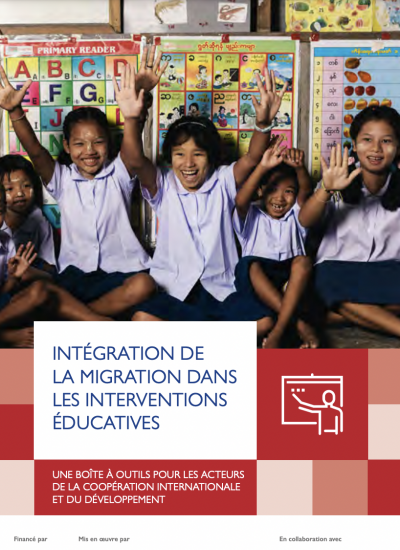Roughly 1 in 70 children worldwide live in a country different than that of their birth, and their access to quality education can be limited. Education is not only essential for all individuals to maximize their capabilities and livelihoods, but it is also important for building peaceful and prosperous societies. Universal access to education constitutes a central pillar of sustainable development, with the linkage between migration and education explicitly recognised in the SDGs (Target 4.B, on promoting student mobility). If intense work is not done to achieve SDG 4, only one in six countries will meet the goal by 2030.
Achieving SDG 4 can help by addressing different drivers of conflict or displacement in communities of origin, whilst also facilitating social cohesion in communities of destination by facilitating migrants’, displaced persons’ and their families’ socioeconomic inclusion. Moreover, access to education can help to ensure that migrants and displaced persons have the skills needed to be successful in the labour market and can adapt to the changing nature of employment opportunities. Investment in education for children and adults (vocational or skills training) may also enable migration, as educated populations are more able to access better livelihood opportunities that may be scarce in their own communities. Moreover, people may migrate to access education. In addition, when migration is well-managed, migrant workers, such as teachers, can help improve education systems both in communities of origin and destination.
But the linkages between the SDG 4 and migration don’t stop there. They are context-specific but also often cross-cutting with other sector areas such as:
- Employment: Integrating migrants and their families into education systems can help manage the global demand and supply for labour migration by improving matching of skills, ensuring that migrants have the needed skills and competencies to contribute to their communities of destination and origin. Supporting the employment of migrant workers in education systems - such as through teacher mobility programmes – can strengthen education systems both in communities of origin and destination. (In line with SDGs 5, 8 and 10)
- Health: Mainstreaming migration into education can positively affect the future health outcomes of migrant students and their families. Through education systems, migrant learners discover how to access and navigate the health services of their host country, which may improve their access to services such as sexual and reproductive health, mental health, and other public health services. That being said, in 2020 a quarter of primary schools worldwide do not have basic services such as drinking water, basic sanitation facilities, or electricity. (In line with SDG 3, 5 and 10)
- Private sector development and trade: The private sector is the largest employer of migrant workers, determining labour market gaps and demand for specific skills and industries. Strong education systems can ensure migrants are best suited to meet these private sector needs. The private sector can also support technological advances in alternative learning pathways such as distance or home-based learning which can overcome spatial separation in order to minimize disruptions to education (In line with SDGs 8, 9 and 10)
- Urban development: Migrants often move to urban destinations, so cities and urban authorities must include migrants in their service delivery, including through access to education for migrant learners, regardless of migratory status. (In line with SDG 5, 10 and 11)
- Environment and Climate Change: Natural disaster, pandemics and other emergencies often place education systems at risk of collapse, severe damage, or major disruptions to learning for students – heightening the need for alternative learning pathways such as distance or home-based learning. Additionally, to support the green transition, current migrant workers will need to be included in green re-/up-skilling programmes, and future migrant workers with the necessary green skills will have to be attracted from abroad. (In line with SDG 5, 8, 10, 13)
